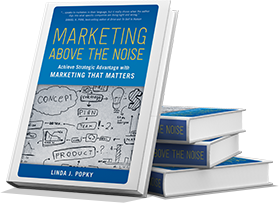Whose Rules Are They Anyway?
Author: Linda J. Popky
Anyone who has ever been around Siberian Huskies knows there’s one thing you can count on: If a Siberian gets loose, he’ll run fast and not stop for a very long time. Despite our best efforts, every so often one of our dogs will get out, forcing us to go up and down neighborhood streets and sidewalks in a frustrating effort to catch up with him and get him back home safely.
The problem is that dogs don’t operate under the same set of rules we do. While we’re using the public thoroughfares to find him, he’s happily tramping through back yards, brush, and forests without a second thought.
What applies to man vs. dog is also relevant in many other situations – from actual warfare to battles in the marketplace.
One of the key turning points in the Revolutionary War came because the British, following the accepted rules of 18th century warfare, prepared to wait out the winter in Boston in 1776. After all, it was unheard of and terribly uncivilized to conduct battles during the harsh weather conditions of a New England winter. The conflict could quite rightly wait until spring. The American colonists, on the other hand, waited till the British had pulled back and settled in before attacking full force. With the element of surprise clearly on their side, they were able to make inroads that changed the course of the war and left the British shell-shocked: Those bloody Americans – don’t they know that’s not the way war is fought!
It’s not just the British who were caught by surprise. This pattern repeats itself through the 19th, 20th, and even 21st centuries. From the Civil War through World War I and World War II, each new conflict brought new military strategies, tactics, and weapons – each time stumping the losing side who never expected their enemy to break the rules and do that vs. engaging in war the way it was supposed to be fought. The current war in Iraq shows us that strategies that worked even a decade ago in the Persian Gulf are no longer effective. Iraqi insurgents aren’t playing by the established rules, and four years later, the conflict still rages.
What’s true on the battlefield is reflected in the marketplace. We expect our customers and our competitors to abide by a set of “rules” and we are caught by surprise, even blindsided, when they don’t. There are many factors impacting the way business is done in 2007 – from globalization to technological advances to environmental concerns or legal and regulatory considerations. Each of these changes the “rules” in a way that we may not expect.
How does this impact your marketing? First, it’s important to be on the lookout for trends and changes in the selling environment. Understand how the market may be shifting or the rules of the game changing with the entry of new players, new products, or new approaches. Be proactive where you can, but don’t be caught napping by new strategies or tactics.
Second, understand that your customers may not play by the rules you want to impose. Just because you believe a product should be used, sold, or supported in a certain way doesn’t mean your customers agree. We are in an age of customer empowerment, with well-educated consumers who are not afraid to speak up, push back, and do things differently. They will not be dictated to, nor will they follow a set course of behavior because you as a marketer tell them it’s correct. Whether it’s medical treatments or customer service, consumers will take.
Offer alternatives: different ways to buy your product or service, to work with you, and to reach you when things aren’t going right. Ask – don’t tell – your customers for input. Watch what they do and how they do it. Be prepared to be flexible.
Remember the REAL golden rule: He with the gold (in this case, your customers) makes the rules.
The Marketing Leverage Hall of Shame: Food Makers in the Dog House
This issue we focus on the pet food industry – in the spotlight due to the recent finding of tainted dog and cat food, resulting in renal failure and a yet unknown number of pet deaths.
There are so many places to pin blame and shame here it’s almost hard to list them all: The Chinese wheat gluten supplier who provided the tainted raw material, the Canadian food supplier who didn’t ensure the quality and safety of their products, the FDA for not adequately performing its oversight of the pet food industry.
But let’s not forget the pet food suppliers themselves, who it appears are actually marketers rather than manufacturers of pet food. What’s become apparent as a result of this situation is that whether you buy the low-cost economy pet food at Wal-Mart or the high-end specially formulated food from Eukanuba/IAMS, the actual food ingredients all come from the same supplier with the same main ingredient.
What’s wrong with this picture? While all pet food manufacturers will now need to prove to the public that their pet food is safe to eat, the premium manufacturers will also have to prove to pet owners like me why I should continue to pay top dollar for their products when they are basically identical to what’s sold in Wal-Mart, Safeway or under private label. If the ingredients are the same, then what’s different? The packaging? This is a great example of how apparently identical products have been successfully positioned at various price points without the consumer understanding how similar the products themselves actually are.
We talk about products being only part of a total solution that includes service, customer experience, image/branding and competitive environment. However, the bottom line is that there needs to be enough differentiation in the total solution to justify selling different versions at different price points.
Sellers, you are all forewarned: Hell hath no fury like millions of pet owners scorned.
Have a Hall of Shame/Fame tip? Send us your stories and anecdotes. Each issue we’ll publish one of the best. If we choose yours, you’ll receive a special Leverage2Market memento (and the fame of being highlighted here) as our gift. Email linda@leverage2market.com with your suggestion.




